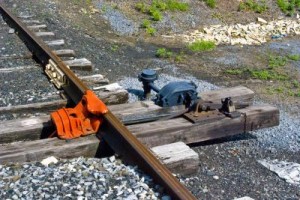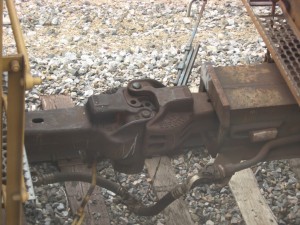My Introduction to Basic Railroading 101
Years ago, during one of my first cross-country train rides, I noticed a yellow metal device attached to one of the rails of a siding right outside my sleeping car window.
“Gee,” I thought, “if a rail car runs over that, it could cause a derailment!”
Well, duh!
Of course, as was later explained to me by a kind and patient Amtrak conductor, what I had seen was, in fact, a derailer … a simple device intended to derail a freight car that might have come loose and rolled out onto the main line where it would have become a serious hazard.
That was the day I really became interested in the fascinating business of railroading. (Please note: I am a long way from being an expert. But I do enjoy learning about some of the ins and outs of the industry that are often hidden from the casual passenger.)
I actually scored a twofer that day because the conductor then asked if I knew how it was possible for the locomotives to begin moving a freight train that might weight 10,000 tons without losing traction.
Of course, I had no idea. In fact, I must admit that such an obvious question had never occurred to me.
“It’s the slack,” he said. Even then, I knew what that was … the six inches or so of “play” in the coupling mechanism on each end of a rail car. When he’s ready to go, the first thing a freight engineer does is back up to compress his train, eliminating the slack between all the cars. Then he slowly starts forward and, as he does, the slack is taken up in one car after another.
“That’s the secret,” said the conductor. “The only way you can start moving a freight train that heavy is one car at a time.”
How about that! Now if I had only taken physics back in high school …





